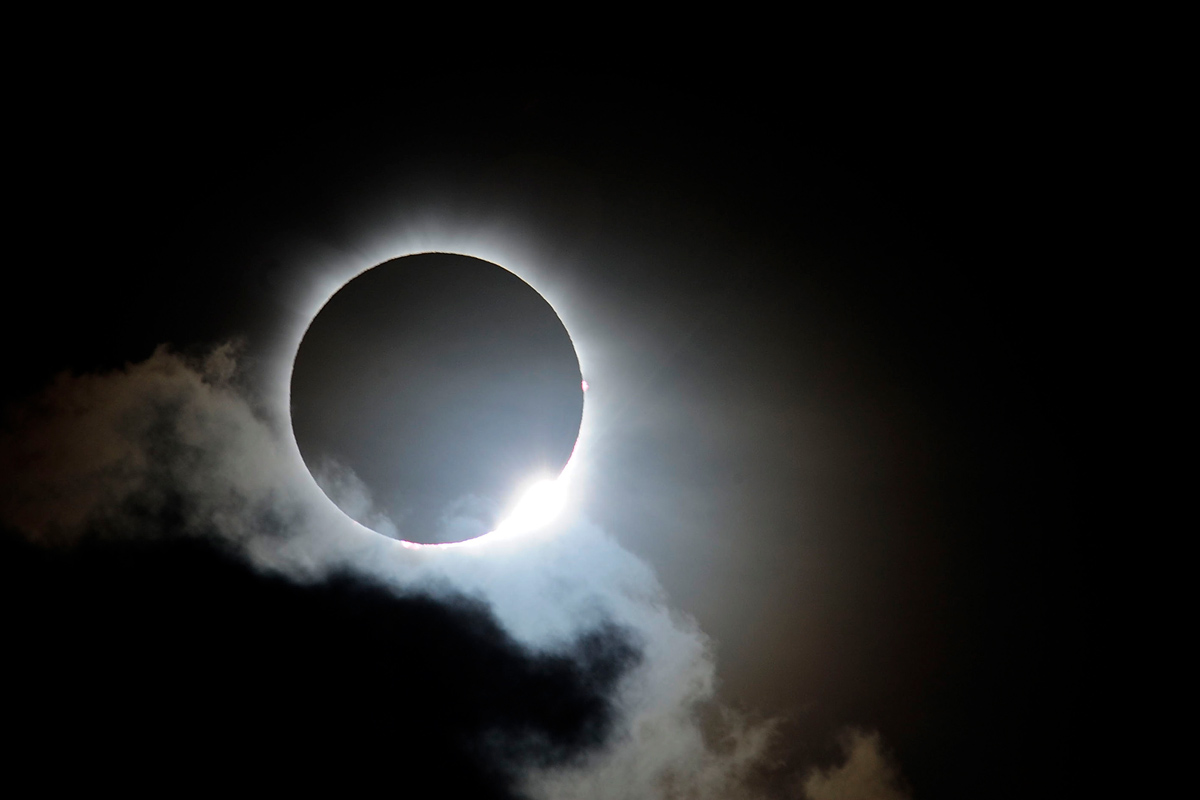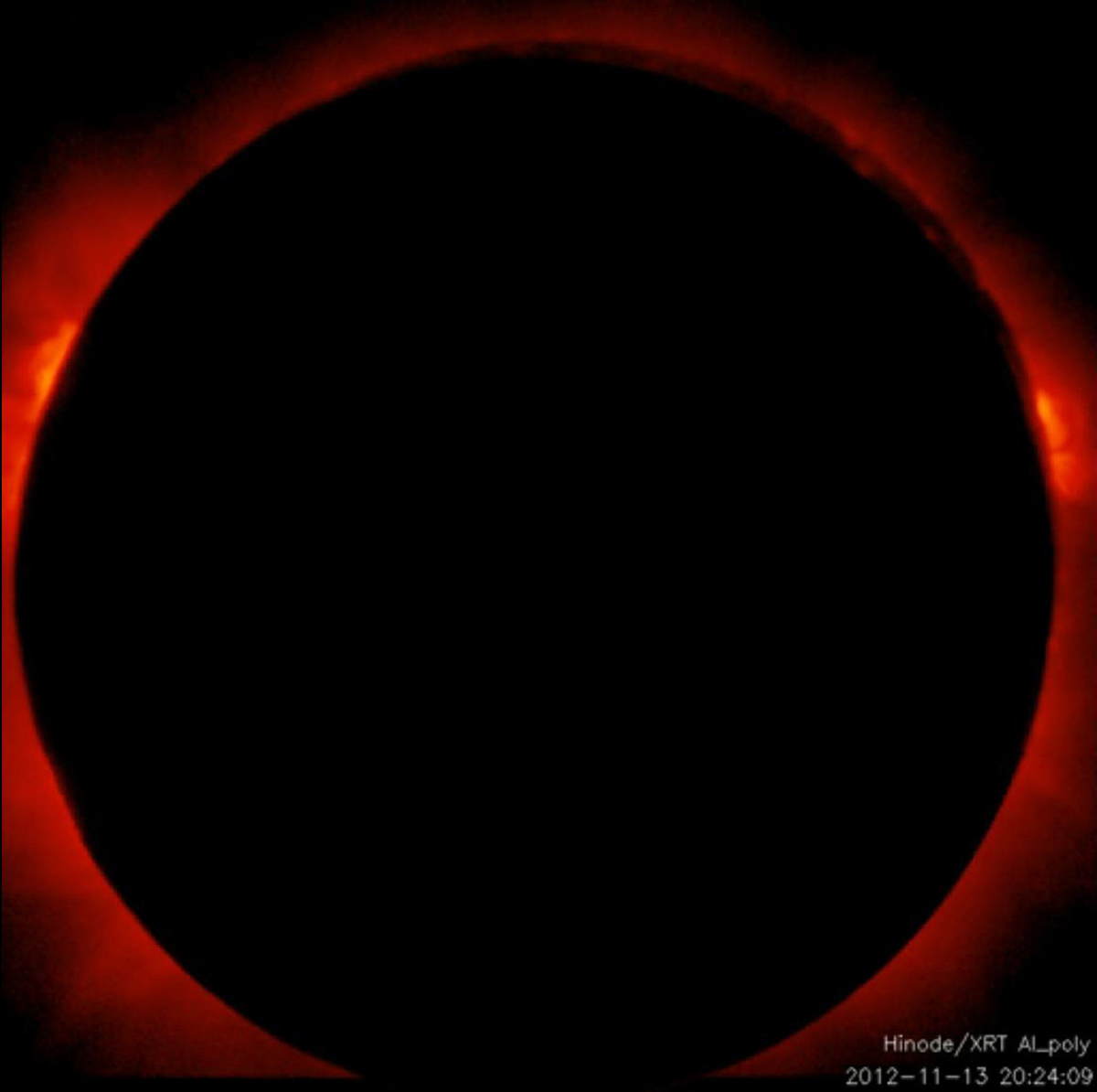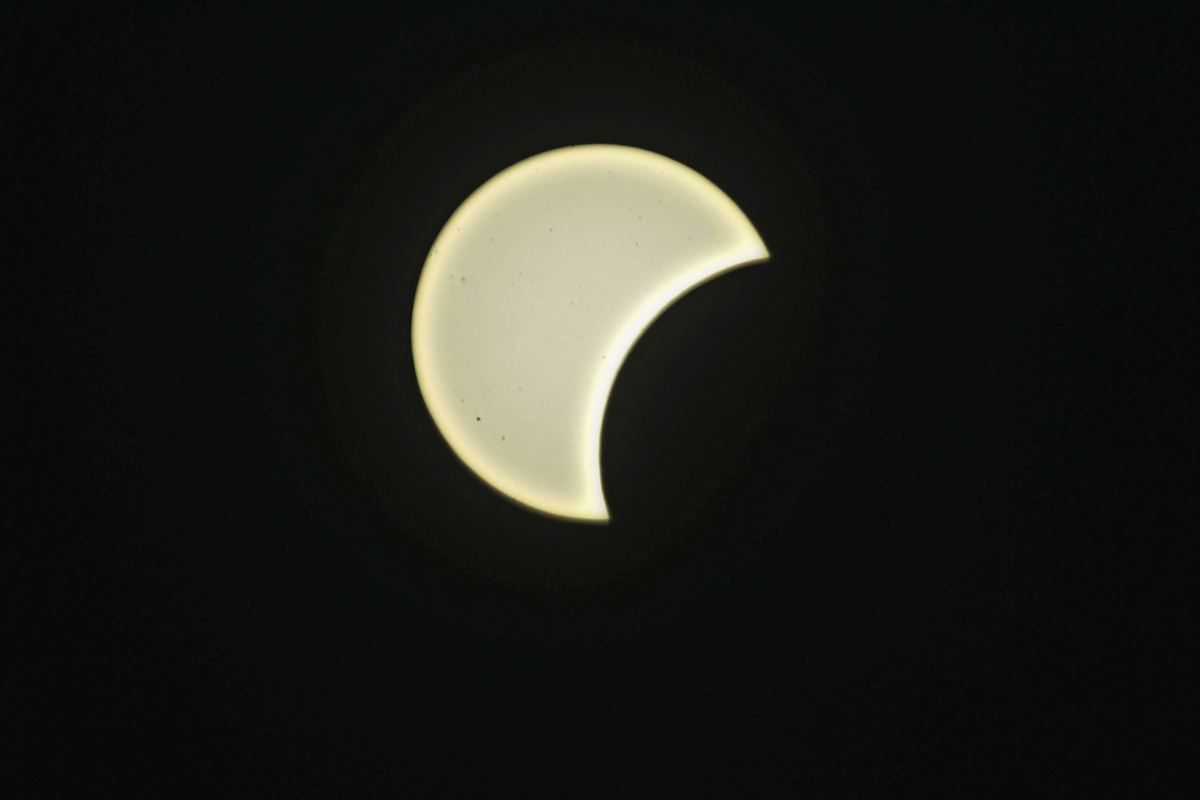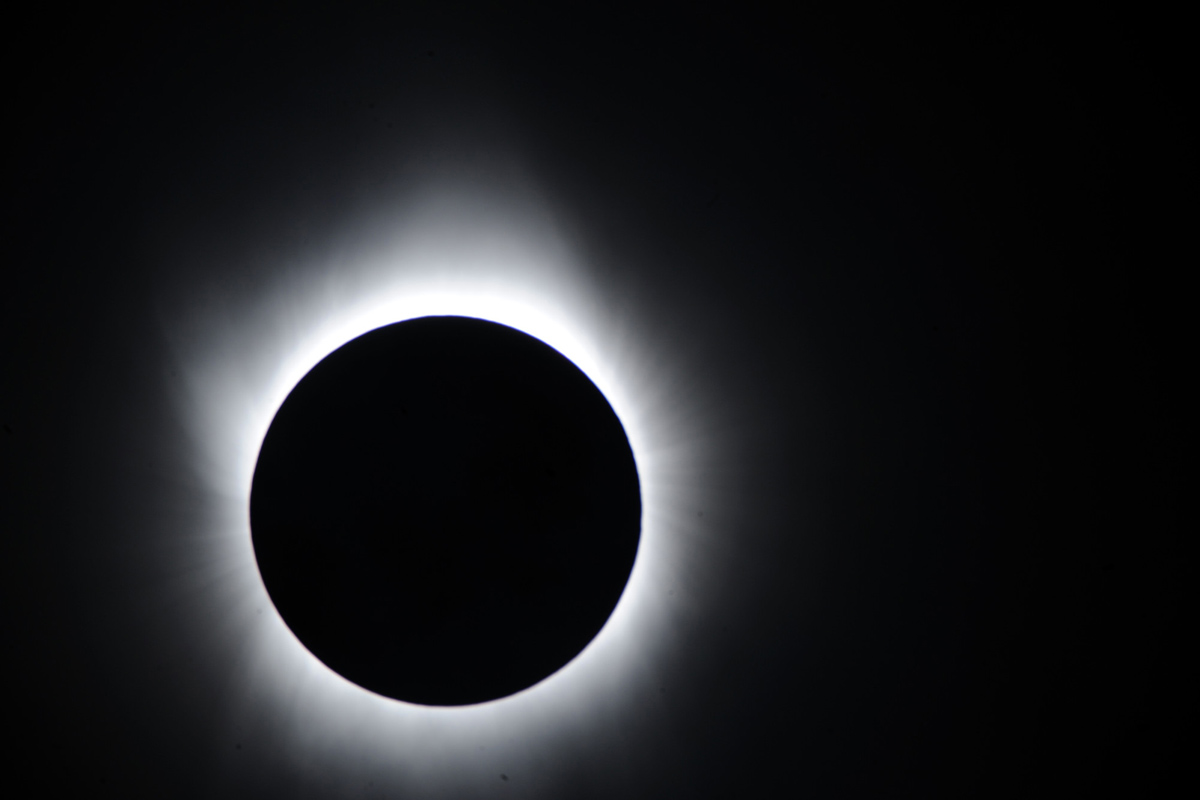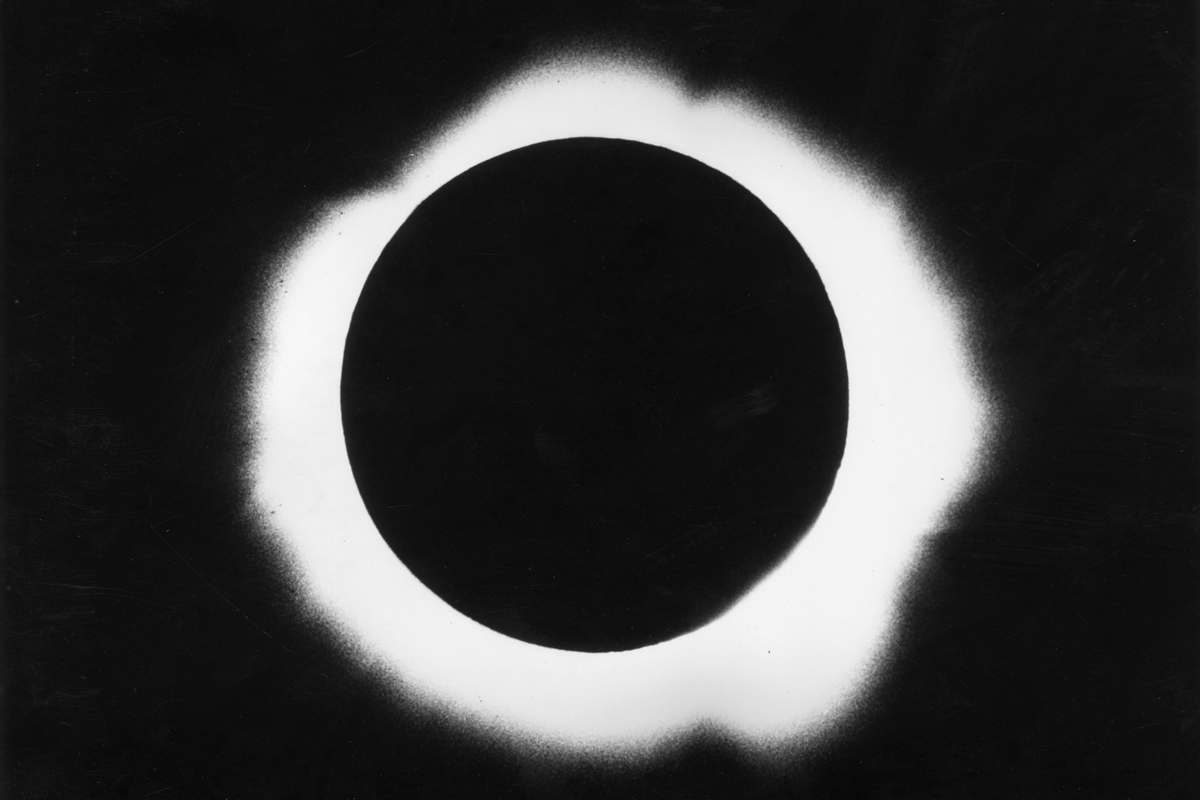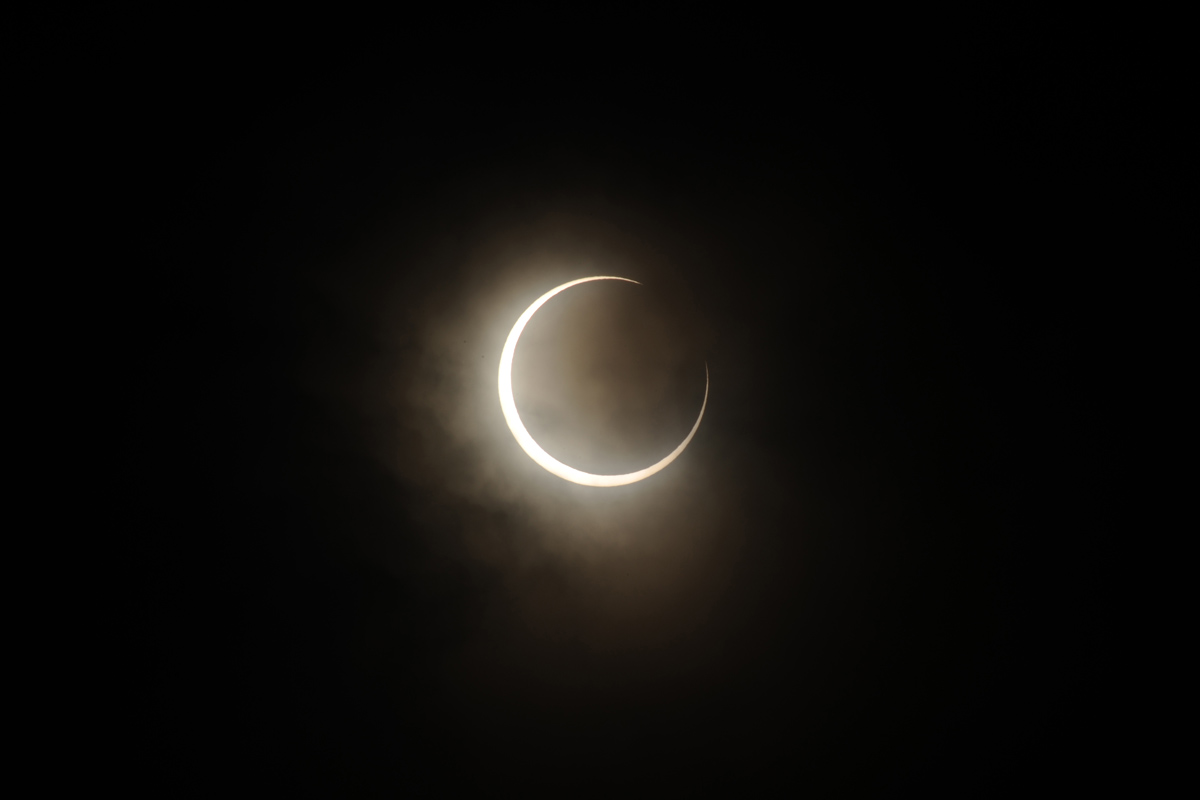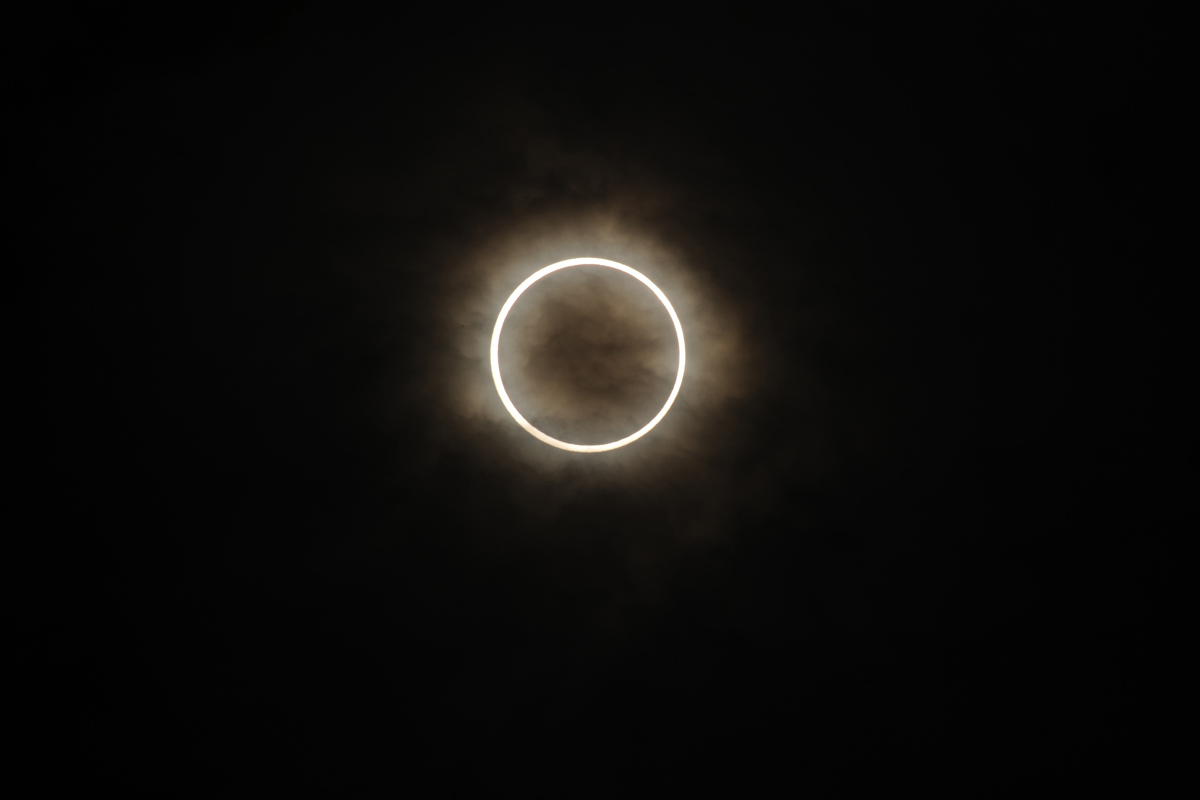Amazing Solar Eclipse Pictures from Around the World
Amazing Images
A total solar eclipse crossed the U.S. on Aug. 21, 2017, wowing skywatchers from Oregon to South Carolina. Here are amazing images of previous solar eclipses worldwide.
Shown here, only a small portion of the sun's disk is visible behind the moon, during the seconds before totality on Nov. 14, 2012. This total solar eclipse was photographed from Palm Cove, Australia. Thousands of eclipse-watchers gathered in a part of North Queensland to enjoy the solar eclipse.
Lunar Transit
On Jan. 30, 2014, the moon moved between NASA's space-based Solar Dynamics Observatory, or SDO, and the sun, giving the observatory a view of a lunar transit from space. SDO captures a lunar transit two to three times each year. Partial solar eclipses are also visible from Earth two to three times per year on average, but total solar eclipses are only visible from Earth about once every 18 months, and are visible over a much smaller area. This lunar transit lasted for 2.5 hours, which is the longest the spacecraft has ever recorded.
Hinode Sun-Observing Satellite
A screen capture from video taken by the Hinode sun-observing satellite on Nov. 13, 2012, showing a partial solar eclipse that was also visible on the ground. The spacecraft — a joint effort between NASA and Japanese Aerospace Agency JAXA — viewed the eclipse on two of its orbits that day.
2012 Solar Eclipse
This screen capture from video taken by the Hinode satellite shows the spacecraft's first view of the Nov. 13, 2012, solar eclipse. Following this observation, the spacecraft orbited around the Earth, and made it back in time to see the eclipse again.
Annular Solar Eclipse from Tiananmen Square
The moon begins to obstruct the disk of the sun during an annular solar eclipse seen from Tiananmen Square on Jan. 15, 2010, in Shenyang, Liaoning Province of China. An annular eclipse occurs when the moon is far away from the Earth in its orbit, causing it to appear smaller in the sky; the reduced size means the moon cannot completely cover the disk of the sun, and a thin ring of the sun's disk (a "ring of fire") remains visible around the edge of the moon. The eclipse, which first became visible in Tamil Nadu city of Kanyakumari, is predicted to be the longest annular eclipse between the years 2000 and 3000 (although a slightly longer annular eclipse took place in 1955).
Partial Solar Eclipse in Gaza City, Gaza Strip
This partial solar eclipse was photographed on March 29, 2006, in Gaza City, Gaza Strip. A partial eclipse occurs when sun and moon are not exactly in line, and the moon only partially obscures the sun.
Breaking space news, the latest updates on rocket launches, skywatching events and more!
Total Solar Eclipse from Iwo Jima, Japan
The July 22, 2009, total solar eclipse, as seen from Iwo Jima, Japan. The longest total eclipse of the sun of this century, the event triggered tourist fever in Asia as astronomy enthusiasts flocked to watch the moon cover the disk of the sun. The eclipse was visible from within a narrow corridor that began in India and crossed through Nepal, Bangladesh, Bhutan, Myanmar and China (including Shanghai), but passed south of most of Japan.
Total Solar Eclipse from Harvard College Observatory
This snapshot by the Harvard College Observatory captures the total solar eclipse of March 7, 1970. The eclipse was visible along parts of the U.S. East Coast, from Delaware to Florida.
Sun Spots
Sun spots can be seen in this image that captures the moon moving across the face of the sun during an annular eclipse on May 20, 2012. The eclipse was visible in Tokyo; the shadow then traveled across the Pacific Ocean and all the way to Texas.
Annular Solar Eclipse from Tokyo
A crescent of light from the disk of the sun is visible behind the moon during the annular Solar Eclipse of May 21, 2012, seen from Tokyo.
Ring of Fire
The "ring of fire" created by the sun's surface surrounds the moon during the annular solar eclipse observed on May 21, 2012, in Tokyo.

Calla Cofield joined Space.com's crew in October 2014. She enjoys writing about black holes, exploding stars, ripples in space-time, science in comic books, and all the mysteries of the cosmos. Prior to joining Space.com Calla worked as a freelance writer, with her work appearing in APS News, Symmetry magazine, Scientific American, Nature News, Physics World, and others. From 2010 to 2014 she was a producer for The Physics Central Podcast. Previously, Calla worked at the American Museum of Natural History in New York City (hands down the best office building ever) and SLAC National Accelerator Laboratory in California. Calla studied physics at the University of Massachusetts, Amherst and is originally from Sandy, Utah. In 2018, Calla left Space.com to join NASA's Jet Propulsion Laboratory media team where she oversees astronomy, physics, exoplanets and the Cold Atom Lab mission. She has been underground at three of the largest particle accelerators in the world and would really like to know what the heck dark matter is. Contact Calla via: E-Mail – Twitter
